
The First and Only Online Fanzine Devoted to the Life and Works of Edgar Rice Burroughs Since 1996 ~ Over 15,000 Webpages and Webzines in Archive Volume 0254 |

The First and Only Online Fanzine Devoted to the Life and Works of Edgar Rice Burroughs Since 1996 ~ Over 15,000 Webpages and Webzines in Archive Volume 0254 |

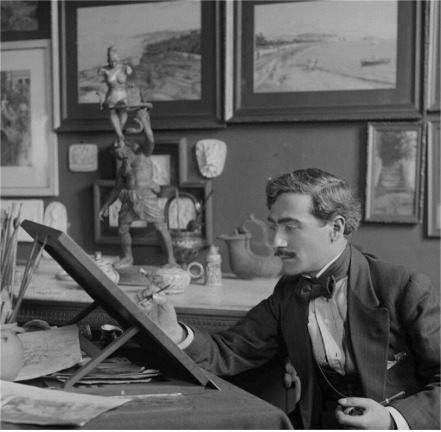
![]()
Fortunino Matania
(Italian, 1881-1963)Born in Naples, Italy, Matania's early training in art came from his father, who was an artist. He illustrated his first book at the age of fourteen, at that age moving to Milan to work for Illustrazione Italiana, then moved north in 1901 to work on Illustration Francaise in Pairs and The Graphic in London. After returning to Italy for military serice he came back to London at the age of twenty-four and joined the staff of The Sphere, and spent the rest of his life in England.
Matania was an expert at depicting historical scenes from all periods of history, as well as specific, current news events, with startling realism and precision for the time. His illustrations for The Sphere depicting the sinking of the Titanic on April 15, 1912 have been cited as an early exemplar. In 1914, with the outbreak of World War I, Matania became a war artist an spent nearly five years at the front drawing hundreds of sketches which often are featured in histories of the War. After the war, he specialized in illustrating historical and ceremonial events, and his drawings were immensely popular, appearing in all the principal magazines and quality newspapers in Europe and American, with occasional forays into science fiction and fantasy.
Matania's illustrations for Edgar Rice Burroughs' Pirates of Venus (1933) and Lost on Venus (1933-34) compared favorably to the best in the field, and it became apparent that many modern day artists such as Frank Frazetta were likely inspired by Matania's sensuous style of illustrating. His sole brush with the film industry was his contribution to the well-known 1933 Alfred Hitchcock movie The Man Who Knew Too Much. A painting by Matania reflected with a mirror into the camera lens served as most of the exciting "Albert Hall" audience and was shot in a small studio.
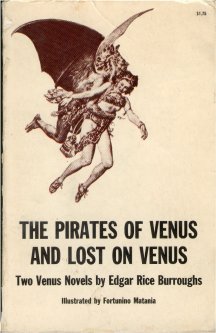
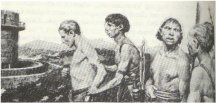
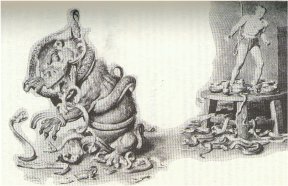
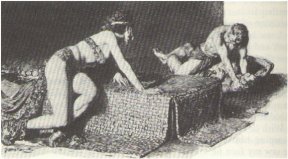
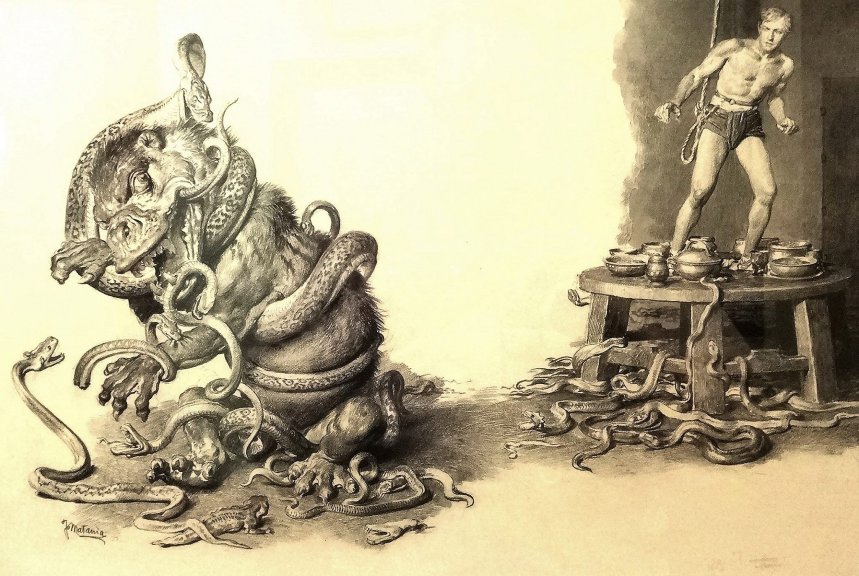
It wrapped a dozen coils about
the body of the tharban,
raised its gaping jaws above
the back of the beast's neck, and struck.
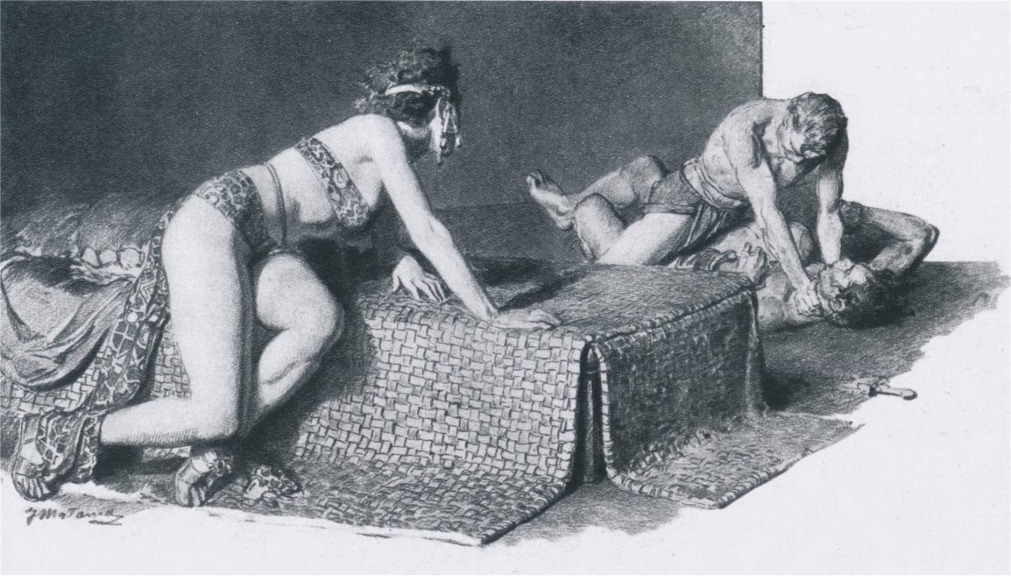
I redoubled my efforts to shut
off his wind before his cries attracted the aid of any of his fellows.
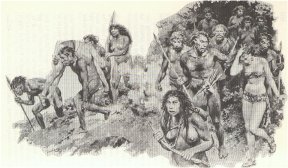
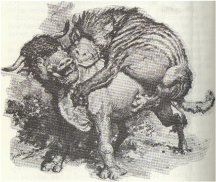
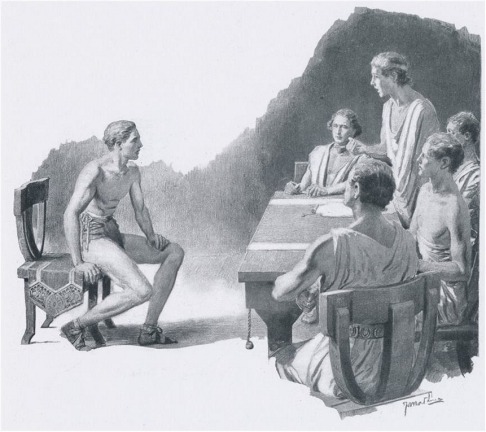
With deep regret, therefore,
we could but conclude that
it would best serve the interests
of humanity if you were destroyed.
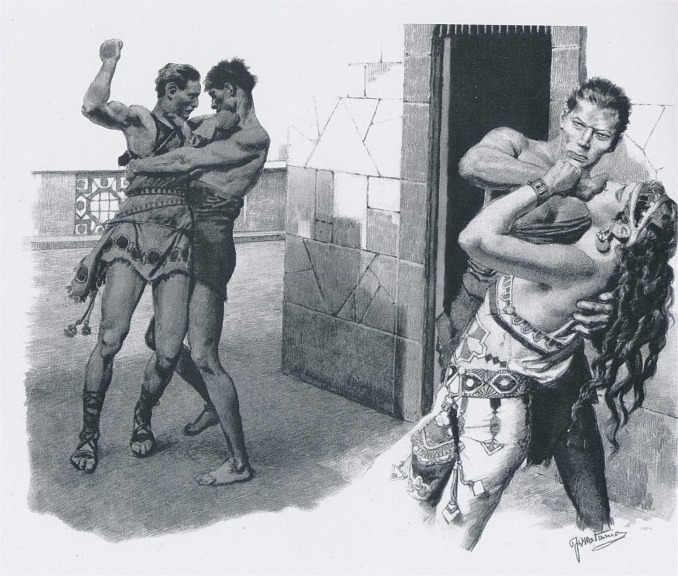
I saw another man grab Nalte,
clap a hand over her mouth and drag her into the doorway.
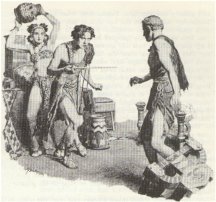
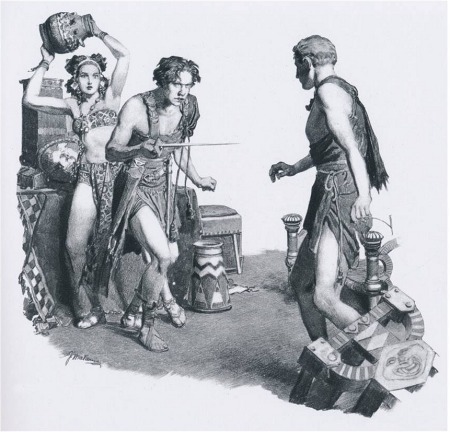
"How would you like to die,
fool?" he snarled.
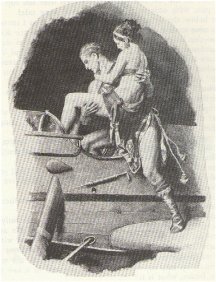
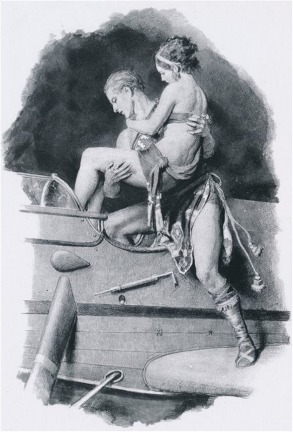
I lifted Duare into the cockpit.
She asked no questions; there
was no time for questions.
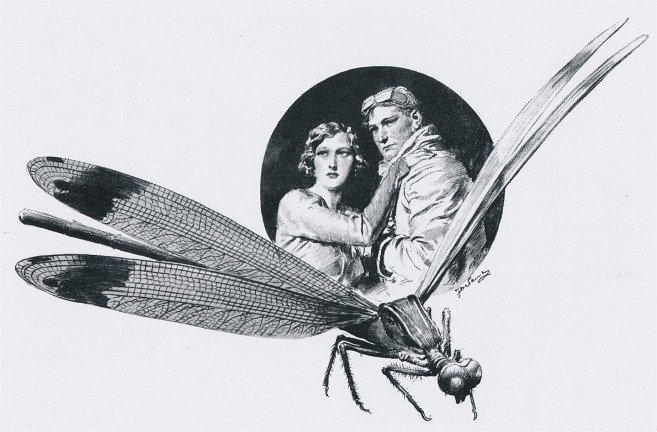
From the Anthony Langley Collection
![]()
Fortinino Matania’s Art This is a brief, personal view of this great artist, as the work in depth has already been done in Burroughs Bulletin, New Series No. 10, April 1992 where we find a great, definitive and well illustrated article by Robert R. Barrett called, “Fortunino Matania, R.I. -- The Last Victorian” and an interview with the artist conducted by Frank Westwood.Barrett informs us that Matania “exhibited nearly every year at the Royal Academy and The Royal Institute of Art, and his paintings were usually depictions of Roman life and customs.” This fact confirms my first impressions of his work, which led me to wish that he had created a series of drawings and paintings for “I Am A Barbarian.” His depictions of architecture, costumes and weapons all have the flavor of ancient Rome, which makes him the perfect artist for many of ERB’s novels, which have the same Roman atmosphere lurking in the background of his many worlds.
The thing that is most striking about Matania’s art is its startling realism. His almost photographic style retains the quality of the engravings of the old masters, whic h is often so precise that one gets the impression that his pictures were created by a method of collage. For example, the cover illustration for the Dover edition of “The Pirates of Venus and Lost on Venus” shows a girl in the arms of a winged man that one might well imagine combined the wings of a bat, the head of an American Indian, and the limp body of a girl with arms twisted to accommodate the cut-and-paste method. It’s not that this is not an effective picture -- indeed it is very well conceived -- but the image is so graphically startling that it appears to have been done by another method than by painting alone.
Matania’s art looks old-fashioned to us today. Barrett informs us that “During his life, Matania remained aloof from every enthusiasm that the impressionable art community might be smitten with: post-impressionism, symbolism, expressionism, cubism, surrealism. For all of these ‘schools’ he had an austere and pragmatic scorn. One will find no trace of these ‘isms’ in any of his work. For him, they might well have never existed.”
For this reason alone, Matania might well be the perfect Burroughsian artist, for the literary style of ERB remained similarly in the backwaters of the 19th Century. The literary critic always runs into a brick wall when he tries to compare ERB’s work with his contemporaries simply because he was an anachronism who continued to write like a Victorian despite his many enthusiasms for modern inventions and discoveries.
We might easily imagine Matania illustrating the works of Jules Verne, H. Rider Haggard or H.G. Wells, for this is the genre of early science fiction that is most like the works of Burroughs. Indeed, many of Matania’s pictures look as though they had been lifted directly from illustrations for works by Verne, Haggard or Wells.
If J. Allen St. John had not done all of his famous work for ERB, we might well be singing the praises of Matania as his greatest illustrator. Had Matania been given the early commissions that St. John obtained, we might well have an entirely different view of ERB’s work -- one that more firmly tied him to a classical past and much closer to a graphic realism.
~ David "Nkima" Adams
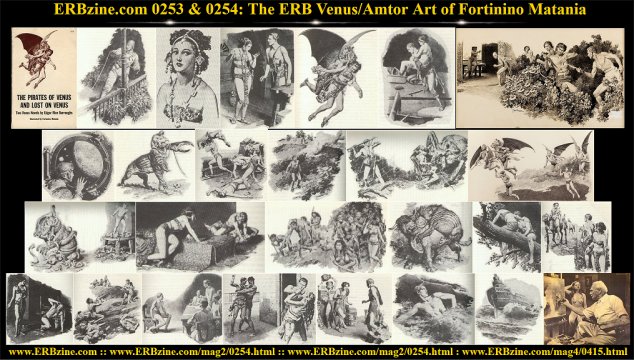
| 1. Pirates
of Venus
2. Lost on Venus 3. Carson of Venus |
4. Escape
on Venus
5. The Wizard of Venus (Tales of Three Planets) |
![]() .
WEBJED:
BILL HILLMAN .
.
WEBJED:
BILL HILLMAN .![]()
Visit
our thousands of other sites at:
BILL
and SUE-ON HILLMAN ECLECTIC STUDIO
Some
ERB Images and Tarzan© are Copyright ERB, Inc.- All Rights Reserved.
All
Original Work ©1996-2004/2021 by Bill Hillman and/or Contributing
Authors/Owners
No
part of this web site may be reproduced without permission from the respective
owners.